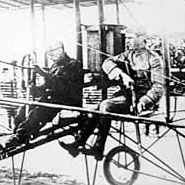 History tells us that early consideration of using the airplane as an instrument of war had to deal with the question of whether the recoil of a weapon being fired would result in destruction of the airplane. If that seems ludicrous by today’s standards, let’s remember that the first shot fired from an airplane occurred on Aug. 20, 1910, a mere 6 years, 8 months, and 3 days after the first recorded controlled powered airplane flight.
History tells us that early consideration of using the airplane as an instrument of war had to deal with the question of whether the recoil of a weapon being fired would result in destruction of the airplane. If that seems ludicrous by today’s standards, let’s remember that the first shot fired from an airplane occurred on Aug. 20, 1910, a mere 6 years, 8 months, and 3 days after the first recorded controlled powered airplane flight.
At Sheepshead Bay race track near New York City, with Mr. Glenn Curtiss piloting, Lt. Jacob E. Fickel fired a rifle at a 3-foot-by-5-foot target from an altitude of 100 feet. The next month, Lt. Fickel and Mr. Curtiss repeated the experiment in Boston, Mass., this time using an Army semi-automatic pistol.
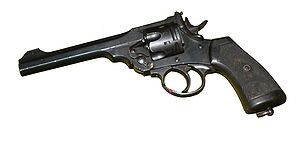 The historical record is far less precise with regard to the first time an aviator fired at another airplane in anger. Years ago, I read that a British reconnaissance pilot decided to try it with his standard issue Webley MkVI .45 caliber double-action revolver. According to a source I have long since forgotten, he wanted to do more than exchange waves and occasional hostile glances with German reconnaissance pilots, so he hauled out the 2.4-pound (+ bullets) weapon and took a potshot at one.
The historical record is far less precise with regard to the first time an aviator fired at another airplane in anger. Years ago, I read that a British reconnaissance pilot decided to try it with his standard issue Webley MkVI .45 caliber double-action revolver. According to a source I have long since forgotten, he wanted to do more than exchange waves and occasional hostile glances with German reconnaissance pilots, so he hauled out the 2.4-pound (+ bullets) weapon and took a potshot at one.
Another story attributes the first shot to a German pilot. He fired a shotgun at a Russian pilot, who became incensed at this egregious violation of flyer’s etiquette and returned the favor the next day with a rifle.
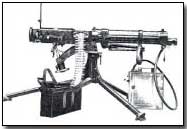 Whatever the reality, it didn’t take long before a machine gun made its airborne appearance and created an immediate and serious problem. With no way to fire through the propeller without hitting the blades, the only outcome would be for a pilot to shoot himself down. So they tried mounting the gun above the propeller. This didn’t work, because the only way to aim the gun was by aiming airplane, and the only way to fire it was to pull a cord from the pilot’s seat. Reloading required that the pilot stand up while holding the control stick between his legs. Hopefully with no one shooting at him.
Whatever the reality, it didn’t take long before a machine gun made its airborne appearance and created an immediate and serious problem. With no way to fire through the propeller without hitting the blades, the only outcome would be for a pilot to shoot himself down. So they tried mounting the gun above the propeller. This didn’t work, because the only way to aim the gun was by aiming airplane, and the only way to fire it was to pull a cord from the pilot’s seat. Reloading required that the pilot stand up while holding the control stick between his legs. Hopefully with no one shooting at him.
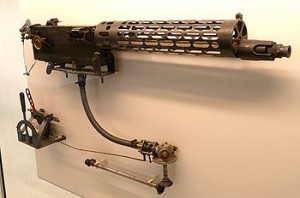 Ingenuity prevailed when Roland Garros of France protected his propeller by attaching metal shields to the back of the blades, angled so the bullets were deflected away from the plane and the pilot. When engine trouble forced him down behind German lines, they learned the secret and equipped their fighters the same way until Anthony Fokker designed a method of synchronizing the firing of the machine gun with revolutions of the propeller. Soon all the belligerents were using the interrupter gear and aerial warfare became a far more deadly business.
Ingenuity prevailed when Roland Garros of France protected his propeller by attaching metal shields to the back of the blades, angled so the bullets were deflected away from the plane and the pilot. When engine trouble forced him down behind German lines, they learned the secret and equipped their fighters the same way until Anthony Fokker designed a method of synchronizing the firing of the machine gun with revolutions of the propeller. Soon all the belligerents were using the interrupter gear and aerial warfare became a far more deadly business.
 Throughout the history of fighter aviation, escalation in capability has resulted from improvements in weapons delivery platforms (the aircraft), weapons, and targeting systems. If we fast-forward to current day, America’s newest frontline fighter may well be the end of an era best described by Adolf Galland, a German Luftwaffe General and flying ace who served throughout WWII In Europe and is credited with 104 aerial victories, all of them against the Western Allies. Galland: “Only the spirit of attack born in a brave heart can ensure victory in a fighter aircraft no matter how advanced it may be.”
Throughout the history of fighter aviation, escalation in capability has resulted from improvements in weapons delivery platforms (the aircraft), weapons, and targeting systems. If we fast-forward to current day, America’s newest frontline fighter may well be the end of an era best described by Adolf Galland, a German Luftwaffe General and flying ace who served throughout WWII In Europe and is credited with 104 aerial victories, all of them against the Western Allies. Galland: “Only the spirit of attack born in a brave heart can ensure victory in a fighter aircraft no matter how advanced it may be.”
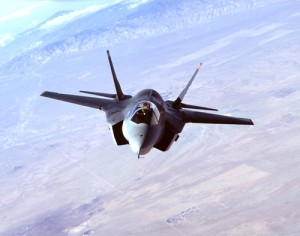 By any measure, conceptually the F-35 Joint Strike Fighter (JSF) is a technological marvel without equal. It may well be that in reality as well. But there are three 600-pound gorillas sitting in the room where decisions have to be made, and everyone seems to be ignoring them.
By any measure, conceptually the F-35 Joint Strike Fighter (JSF) is a technological marvel without equal. It may well be that in reality as well. But there are three 600-pound gorillas sitting in the room where decisions have to be made, and everyone seems to be ignoring them.
In a previous post titled, “No Wonder We’re Broke,” I mentioned that the JSF $382-billion program is three to four years behind schedule and on track to cost $5 billion more than estimated, at an increase per airplane of 81% over the original baseline. And in the midst of this financial nightmare, the debate rages about an alternate engine for the aircraft. The Pentagon has repeatedly said it doesn’t need one, but Congress continues to fund the effort. I’ve been following this issue, and you can take it from me that for both sides to offer contradictory and mutually exclusive justification is ample evidence that the JSF program has been out of control for a very long time.
That begs the question of why Congress would spend money we don’t have on something the Pentagon doesn’t want. Maybe it’s because politicians have a vested interest. The defense industry lobbies them and contributes to their campaigns, so of course we need the alternate engine because the company that makes it says so.
 Into this fiasco enters the impact of the second gorilla in the room, deficit and debt reduction. As reported by David Martin of CBS, the Pentagon’s current budget of $715 billion (which is double from that of ten years ago) pays for everything from personnel to thousands of weapons systems and presents a very big target for the Deficit Reduction Commission. One option is to kill the short take-off and landing version of the F-35 being built for the Marine Corps, saving an estimated $17.6 billion between now and 2015. Then, cut the number of F-35s for the Air Force and Navy in half, saving $9.5 billion. This would save $27.1 billion over five years.
Into this fiasco enters the impact of the second gorilla in the room, deficit and debt reduction. As reported by David Martin of CBS, the Pentagon’s current budget of $715 billion (which is double from that of ten years ago) pays for everything from personnel to thousands of weapons systems and presents a very big target for the Deficit Reduction Commission. One option is to kill the short take-off and landing version of the F-35 being built for the Marine Corps, saving an estimated $17.6 billion between now and 2015. Then, cut the number of F-35s for the Air Force and Navy in half, saving $9.5 billion. This would save $27.1 billion over five years.
But according to SecDef Robert Gates, the F-35 is the heart of the future of tactical combat aviation for our services, and the importance of this program can hardly be overstated. To cut back would leave the services dependent on current-generation fighters without stealth capability, which leaves them increasingly vulnerable to modern air defenses. Buying fewer F-35s also increases the cost of each airplane to well in excess of $250 million per copy.
The bottom line is that the F-35 program is too big to fail, too expensive to afford, and we can’t build 2,500 radar-evading stealth fighters, the country’s single most expensive weapons program ever, without breaking the Pentagon bank.
As Paul Bertorelli of AVweb recently wrote, “This presents defense planners with what may turn out to be a historical dilemma. Are we at the point in human history where the manned fighter aircraft is on the downward arc of its zenith? The answer is probably yes, but even if it’s not, you can see the end from here.”
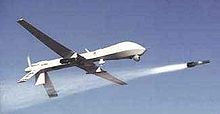 Bertorelli notes that the JSF program has been propelled by massive amounts of lobbying money, and then says, “Ignoring the politics, what about the flying part? Do the services need a state-of-the-art, radar-evading fighter to protect against . . . what threat? Or are drones coming along fast enough to take up the slack? Just to put the F-35 program in chronological context, the F-16 has been in production for 32 years, the F-18 for 27; both are still mainstays in the U.S. inventory. Although they’ve been improved and upgraded, they’re built on old foundations by aerospace standards. They’ll have to be replaced eventually with something and that something might not have a guy (or woman) in it.”
Bertorelli notes that the JSF program has been propelled by massive amounts of lobbying money, and then says, “Ignoring the politics, what about the flying part? Do the services need a state-of-the-art, radar-evading fighter to protect against . . . what threat? Or are drones coming along fast enough to take up the slack? Just to put the F-35 program in chronological context, the F-16 has been in production for 32 years, the F-18 for 27; both are still mainstays in the U.S. inventory. Although they’ve been improved and upgraded, they’re built on old foundations by aerospace standards. They’ll have to be replaced eventually with something and that something might not have a guy (or woman) in it.”
Bertorelli may well be prescient about where the future of fighter aviation is going. But even if he is, there’s the third gorilla that America’s defense establishment has been ignoring for so long that it’s become invisible.
 We think technology can achieve any military objective if we only throw enough money at it. On the battlefield, it can, right down to detecting an enemy with an AK-47 in the dead of night or in bad weather and targeting him with a burst of 20mm cannon fire. The problem is that it’s the same old story all over again.
We think technology can achieve any military objective if we only throw enough money at it. On the battlefield, it can, right down to detecting an enemy with an AK-47 in the dead of night or in bad weather and targeting him with a burst of 20mm cannon fire. The problem is that it’s the same old story all over again.
America cannot win body-count wars. There’s an inexhaustible supply of them and the cost to kill each one is prohibitive over the long haul even with current-generation Predators ($4.5M, and we lose them) and Hellfire missiles ($60-70,000 each). Hunting ants with sledgehammers is doomed to fail.
We will disengage from this conflict in the same way we have many times before and with the same end result, only much worse. They’ll still be there, and we’ll be crippled by staggering deficits and unmanageable debt, lured there by an enemy who understands what we do not: it doesn’t take overwhelming military power to defeat the big guy. Stay the course, provoke him into years of disproportionate response, and he’ll eventually  turn tail and run.
turn tail and run.
The final score will read:
The tag team of al Qaeda and the Taliban – 1.
America and the F-35 – 0.


